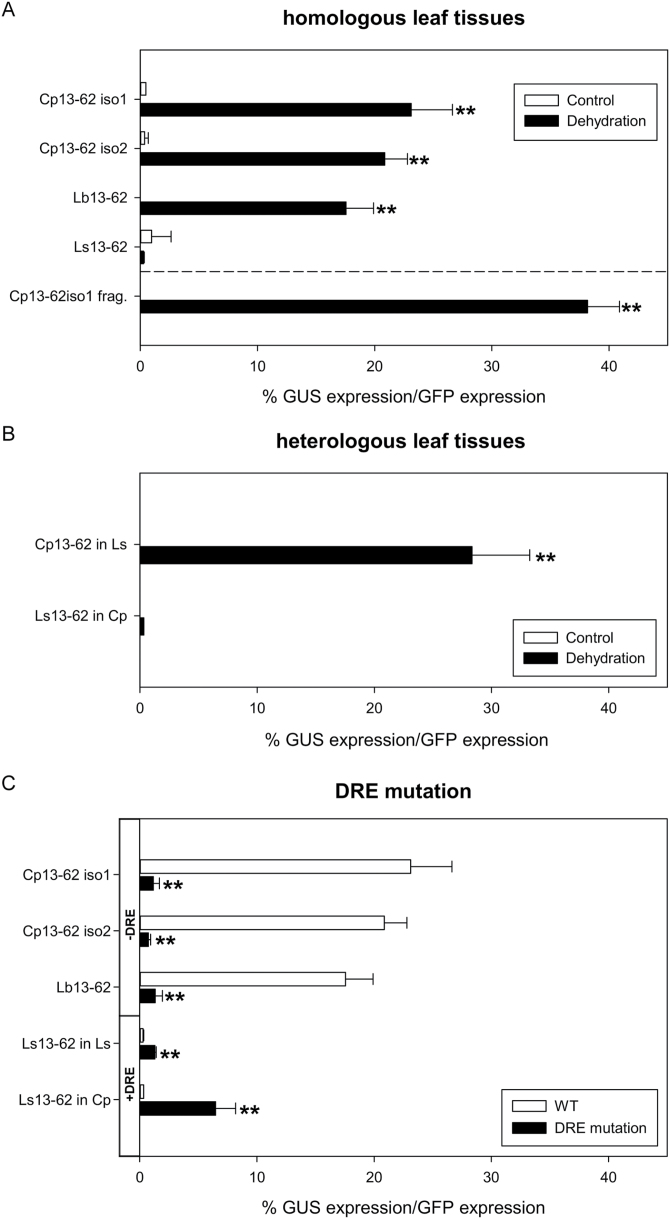Fig. 4.
Activity of the 13-62 promoter in response to dehydration. Wild-type and mutated Craterostigma plantagineum (Cp), Lindernia brevidens (Lb), and Lindernia subracemosa (Ls) promoter fragments were fused to the GUS reporter gene and tested for their activity upon dehydration in homologous and heterologous leaf tissues using a transient expression assay. (A) Response to dehydration of 13-62 wild-type promoters in homologous tissues. (B) Response to dehydration of Cp13-62iso1 and Ls13-62 promoters in heterologous tissues. (C) Effect of mutation of the DRE motif on activity of the 13-62 promoter in homologous and heterologous tissues. The DRE consensus sequence was either impaired (-DRE; promoters of desiccation-tolerant species) or restored (+DRE; promoter of desiccation-sensitive species) and the response to dehydration was compared using wild-type and mutated promoters. A construct expressing green fluorescence protein (GFP) under the control of the CaMV35S promoter was used to normalize all experiments. Bars indicate the relative promoter activities, expressed as a percentage of 13-62 promoter fragment activity relative to that of the CaMV35S promoter. The values are calculated from at least four independent experiments (mean +SD) for each treatment. Statistically significant differences from the control mean in (A) and (B) or wild-type expression in (C) of each promoter fragment are indicated above the error bars: *P<0.05, **P<0.01 (Student’s t-test).

